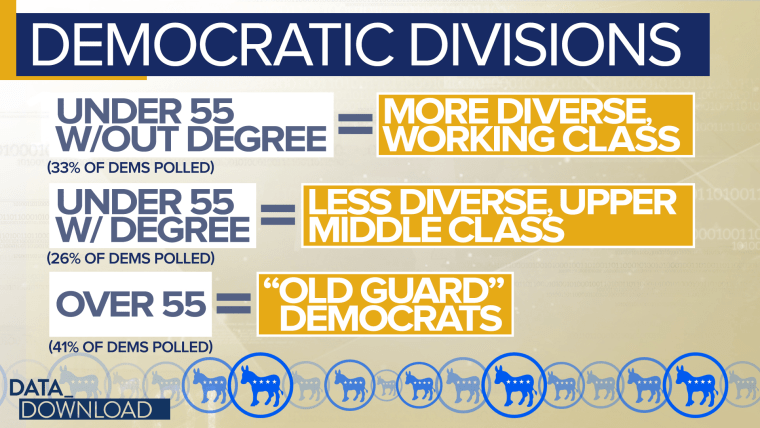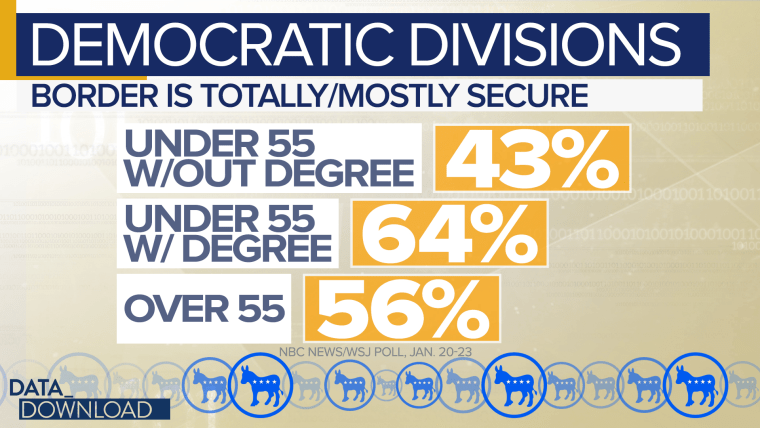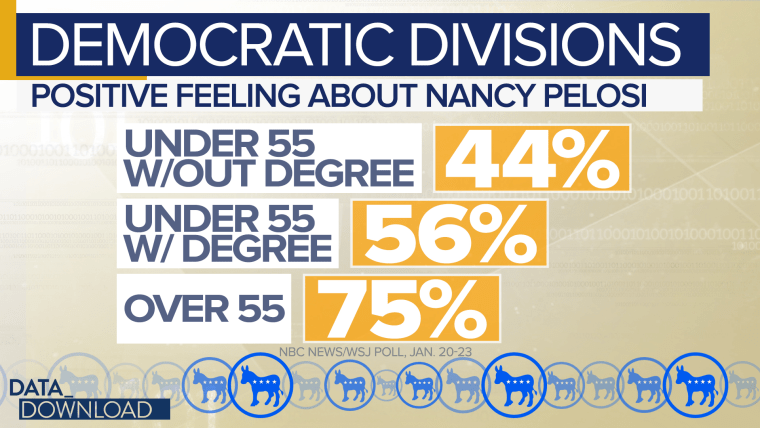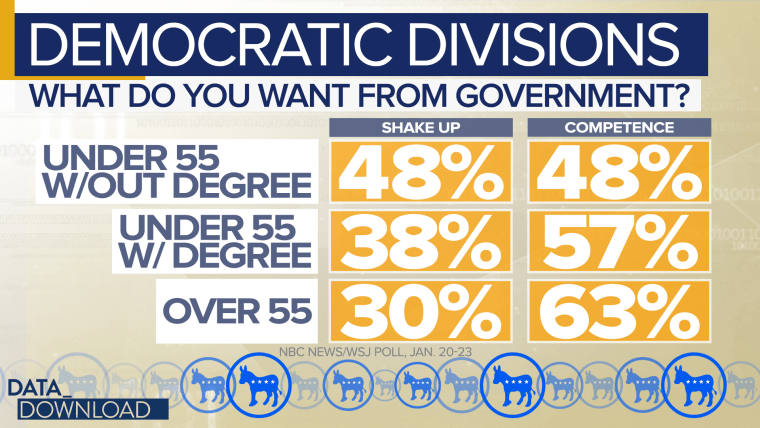The last few years have revealed more than a few cracks in the Republican Party, but the Democrats have divisions lurking in their voter coalition as well and this week’s NBC News/Wall Street Journal poll shows where some of those fault lines lie.
To better understand the various segments of the Democratic Party, NBC News and the Journal looked at three subsets of voters in the party: Old guard Democrats over the age of 55, those younger than 55 with a college degree and those younger than 55 without a degree.
The distinctions between these three groups are not just about age and education, when you look closer at them you see sharp differences in the make up of the groups demographically and economically.

The old guard Democrats are less racially and ethnically diverse than the others – 74 percent are white in this poll compared to 66 percent of the college-educated younger group and only 49 percent among the younger group without a degree. And those in the young group without degrees are much more likely to call themselves “working class” than the others, 35 percent versus 16 percent for the younger college-educated group and 18 percent for the older group.
Those kinds of differences seem to have impacts on some important issues.
For instance, in this latest poll, the younger Democrats without a degree are much less likely to feel the border is secure.

Only 43 percent of those voters say the southern border is totally or mostly secure. Among the younger Democrats with a college degree, 64 percent believe the border is totally or mostly secure and 56 percent of the old guard Democrats believe the border is totally or mostly secure.
That suggests that as the immigration debate goes on there may some different opinions on what should happen along the border among Democrats. It may be that those younger Democrats without a degree, who are also on less stable economic ground are more concerned about new workers entering the workforce.
And the divisions in these groups suggest some challenges could be looming for Democratic leadership in Washington as well. Consider the different feelings these three groups have about Democratic House Speaker Nancy Pelosi.

A strong majority of the old guard Democrats, some 75 percent, have positive feelings about Pelosi. Among the two younger groups, those with college degrees still mostly have positive about the Speaker, 56 percent, but those without a degree are much more tepid in their feelings – only 44 percent say they have positive feelings for her.
There is still a segment of the Democratic Party that is less-than-enthusiastic about their leader in the House and perhaps looking for other voices to speak for them.
And there may be bigger questions for the Democrats looking ahead to the 2020 presidential campaign. The latest poll found there were some differences on opinion with the groups about their views of the government in Washington, D.C.

A solid 63 percent of old guard Democrats are looking for “more competence” and a “steady approach” to Washington governance. A similar number of college-educated younger Democrats, 57 percent, are also looking for a steady hand. But among those younger Democrats without a degree, there is equal enthusiasm for an effort to keep “shaking things up and make major changes in the way government operates.”
With a long list of candidates likely to seek the Democratic nomination, that number suggests there may be a lane open for a candidate (or two) who wants to work the populist end of the Democratic spectrum and propose left-leaning, disruptive policy initiatives — think of Sen. Elizabeth Warren. But there is also a large chunk of the party craving experience, such as former Vice President Joe Biden.
At the very least, the data imply a spirited primary season may be ahead for the Democrats.
Enough to cause serious rifts as the party seeks a nominee? Maybe. Primary battles can be bruising affairs. But working against the differences in these three segments is one big counterweight, President Donald Trump.
The three Democratic groups are in lockstep in their opinion of the president. His approval rating sits at 13 percent or lower with each of them. And in each group, more than 80 percent oppose the building of a wall on the southern border.
In other words, there are differences of opinion in the Democratic Party and those differences are more than just cosmetic. There may be real tensions in the months and years ahead. But as long as Trump is in the White House, it’s hard to see the divisions dominating the party. For the Democrats, Trump is the uniter in chief.